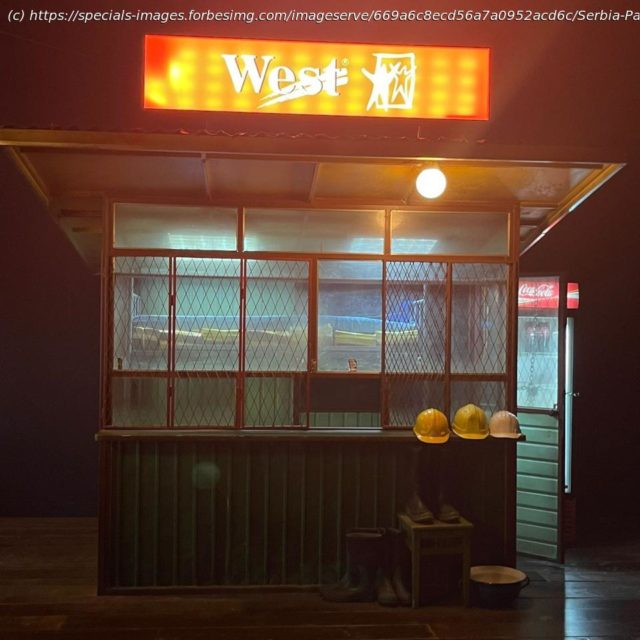In an era of economic uncertainty and market volatility, high-net-worth individuals (HNWIs) are increasingly turning their attention to alternative investments.
In an era of economic uncertainty and market volatility, high-net-worth individuals (HNWIs) are increasingly turning their attention to alternative investments. Among these, the art market stands out as a compelling option, offering not just potential financial returns but also the allure of owning pieces of cultural significance. However, as we delve into 2024, the landscape of art investment is undergoing significant shifts, presenting both challenges and opportunities for savvy investors.The State of the Market: A Delicate Balance
According to the latest UBS and Art Basel Art Market Report, the global art market experienced a slight contraction in 2023, with sales dipping 4% year-on-year to an estimated $65 billion. This decline, following two years of growth, reflects the impact of high interest rates, inflation, and political instability on the market. Yet, it’s crucial to note that despite this downturn, the market remains resilient, with values still above the pre-pandemic level of $64.4 billion in 2019.
Interestingly, while overall value decreased, the volume of transactions increased by 4% to 39.4 million in 2023. This trend suggests a shift in market dynamics, with more activity at lower price points and a pullback in the high-end segment. For investors, this presents a nuanced picture: while blockbuster sales may be less frequent, there’s increased liquidity and opportunity in the broader market.Geographic Shifts: New Centers of Gravity
The art market’s geographic landscape is evolving, offering new avenues for diversification. While the United States maintains its position as the global leader, accounting for 42% of the market by value, its dominance showed signs of weakening with a 3% year-on-year decline.
China, including Mainland China and Hong Kong, has emerged as a formidable player, increasing its market share to 19% and growing by 9% to an estimated $12.2 billion in 2023. This shift is particularly noteworthy for investors looking to diversify their art portfolios geographically.
The United Kingdom, traditionally a strong player, fell to third place with a 17% market share, while France maintained its fourth position with a 7% share. These changes in the global art landscape underscore the importance of a geographically diversified approach to art investment.The Digital Revolution: Online Sales and NFTs
One of the most significant trends reshaping the art investment landscape is the continued growth of online sales. Despite the overall market downturn, online sales increased by 7% to an estimated $11.8 billion in 2023. This figure, while down from the peak of $13.3 billion in 2021, remains almost double the pre-pandemic level and now accounts for 18% of the market’s total turnover.
The online market presents unique opportunities for investors, particularly in the lower to mid-price ranges. Data from the fine art auction sector in 2023 showed that 58% of the value in online-only auctions came from sales under $50,000, with over 85% from works sold for less than $250,000. This trend suggests that online platforms are democratizing art investments, allowing for more diverse portfolio-building strategies.
However, the NFT (non-fungible token) market, which captured significant attention in recent years, has shown signs of cooling. Sales of art-related NFTs on platforms outside the traditional art market declined for the second consecutive year, reaching $1.2 billion in 2023 – a 51% year-on-year drop. While this figure still represents a market 60 times larger than in 2020, it indicates that the NFT space remains volatile and requires cautious consideration from investors.Emerging Trends: Prints, Multiples, and Market Bifurcation
Looking ahead, several trends are shaping the art investment landscape in 2024 and beyond. The prints and multiples market is set for continued growth, building on its impressive 18% increase in sales from 2023. This segment offers accessibility and affordability, potentially attracting a broader range of collectors and investors.
Another notable trend is the growing divide between established and emerging segments of the market. According to MyArtBroker, blue-chip artists and the secondary market are poised for continued strength and stability, while the primary market, art fairs, and ultra-contemporary artists face an uncertain future. This bifurcation presents both opportunities and risks for investors, depending on their risk appetite and investment goals.Investment Strategies for the Discerning Collector
Given the complex and evolving nature of the art market, HNWIs should consider the following strategies when approaching art investment:
1. Diversification is Key: The divergent performance of different geographic markets and market segments underscores the importance of a diversified art portfolio. Consider balancing investments across regions, mediums, and price points.
2. Focus on Quality and Provenance: With a contraction in the high-end market, there may be opportunities to acquire blue-chip artworks at more favorable prices. However, thorough due diligence and expert advice remain crucial. Focus on works with strong provenance and established market histories.
3.
Home
United States
USA — Art The Canvas Of Wealth: Navigating The Evolving Landscape Of Art Investment In...






